#homesteading tips
Explore tagged Tumblr posts
Text
The Ultimate Guide to Backyard Chicken Feeders
Welcome to the ultimate guide to backyard chicken feeders! Keeping a flock of chickens can be incredibly rewarding, but it also requires a lot of work and attention. One important aspect of caring for your birds is ensuring that they have access to fresh food and water at all times. In this post, we’ll cover everything you need to know about choosing the right feeder for your flock, including…
View On WordPress
#Backyard Chicken Feeders#backyard poultry farming#DIY chicken coops and runs#homesteading tips#raising chickens for beginners#self-sufficiency#sustainable living
5 notes
·
View notes
Text
I'm putting together a list of things me and my family will need when shit hits the fan, if anyone has any ideas that would be very helpful. So far i have things like a grill (if i need to cook without power) solar powered generator, some maintenance and repairs that need to be done on our home, etc, if anyone has survival tips, please let me know.
#us election#us politics#trans#transgender#queer#lgbtqia#lgbt#gay#lesbian#survival tips#homesteading#formysanity
22 notes
·
View notes
Text
Homesteading Resources Master Post
So, I have been really into homesteading lately, you call it a hyperfixation, I call it free dopamine. This is my masterlist of sources for different aspects of homesteading life. I plan on making a life in the city homesteading masterlist too. Please be careful when canning a preserving food, I am not an expert, but these sources seemed credible so be sure to can with caution.
Happy Homesteading!
General
Homesteading 101
Skills to Develop
Farmers Market Directory
Ways to make a Profit
Farmer's Almanac
Livestock
Livestock Pros and Cons
Meat Rabbit Guide
Pigs Guide
Chicken Guide
Ducks Guide
Goat Guide
Sheep Guide
Meat Cow Guide
Milk Cow Guide
Gardening
Composting
USA Planting Zones
Europe Planting Zones
Homemade Pest Control
High Yield Garden
High Yield Vegetables
Pollinator Garden
Canning
Canning 101
Fruit
Vegetables
Kitchen
Veggie Recipes
Bone Broth
Wheat to Bread
Sustainability
Self Sufficiency
Reduce, Reuse, Recycling
Clothes Mending
Crafts
Cross Stitch
Embroidery
Whittling
Crochet
Quilting
Knitting
#homesteading#nontrad homemaker#farmlife#farming#farm#plants#crafts#embroidery#gardening#livestock#masterlist#tips#canning#food preservation
80 notes
·
View notes
Text

#homesteading#junko on the farm#tips#garden#gardening#junko#organic#life hacks#flowers#botany#edible#herbs#plants#wildflowers
251 notes
·
View notes
Text
🚨 GARDENING PSA: Mulch Alternative 🚨
ok, so it's that time of year where everyone on all the medias of socialing are saying leave the leaves, use leaves as mulch, and they are all ABSOLUTELY RIGHT DO NOT IGNORE THEM!!
but for those who either live in apartments or cookie-cutter homes where they tore down all the trees and then planted crape myrtles along the main road and nowhere else (iykyk), then there is a solution for y'all, too.
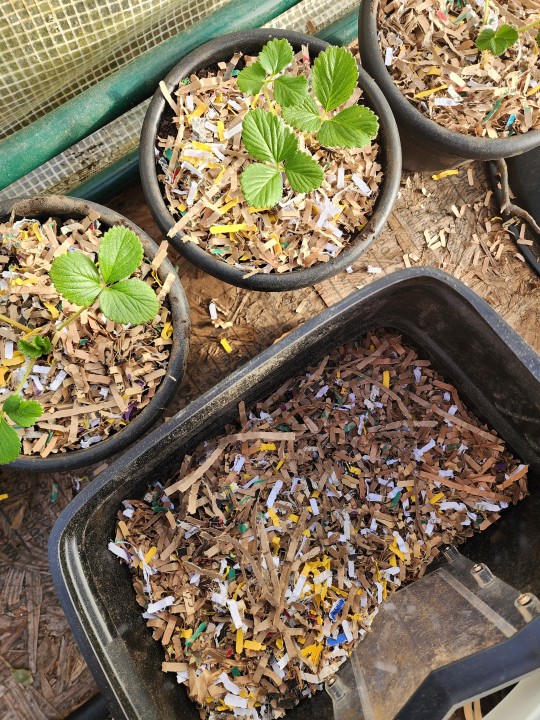
get yo'self a paper shredder! or find someone that has one and steal their remnants. altho highly recommend at least you feeding the shredder yourself, be it yours or someone elses. just because a shredder can destroy it, doesn't mean it can be composted. CDs, for example. but also glossy or magazine paper CANNOT be used. either cardboard devoided of any tape or matte or office paper.
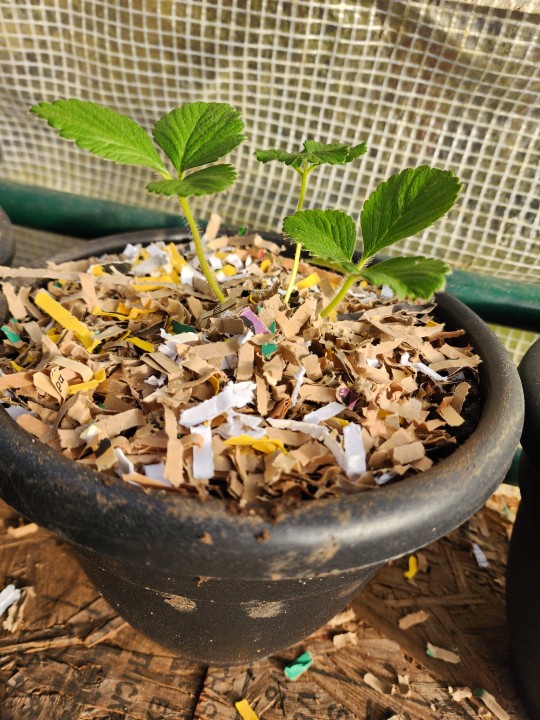
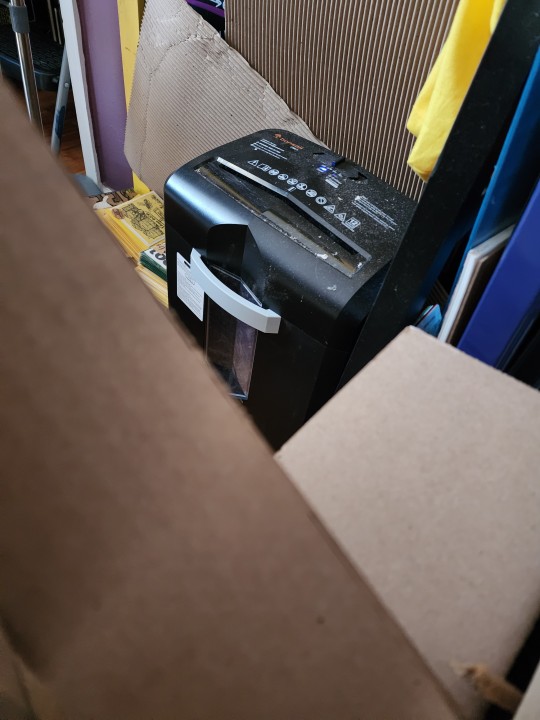
i used some leaves for the strawberries i'm keeping outside in pots when i planted them about a week ago, but for the ones in the greenhouse i was too tired today to walk down the hill to the shed and grab the mower and mulch leaves so i just went into my craft room and shredded some things that are in my gigantic pile to be shredded and called it a day. i bought a shredder specifically for compost (soon to be chicken coop bedding) and i love it. i mean, the pile to shred is bigger than the shredder, but that's a me problem not a you problem. you need a mulch alternative. therefore i present to you, my friend, the shredder.
happy shredding!
#food not lawns#gardening#home garden#homegrown#gardenblr#grow food#food#homestead#homesteading#nature#garden blog#garden ideas#garden inspiration#garden tips#garden talk#garden#container gardening#suburbia farming#suburbian agriculture#suburban agriculture#suburban farm
12 notes
·
View notes
Text
oli's homemade fertilizer tea recipe
@tomorrowsgardennc mentioned in their holy grail garlic post my homemade banana peel soup fertilizer, and i wanted to elaborate more on it!

the original idea comes from my art mentor, who practices home witchcraft and is a beautiful artist & photographer (check her out here). she taught me to soak banana peels in water in a sunny spot for a day and then to compost the banana peels (or let the critters get them) and use the liquid afterwards to water my plants. it gives them a great boost of potassium!
but!!! i took it a step further! i won't show pictures bc it gets kinda gross looking, but i have this big jug (used to make alcoholic drink mix in it for parties but now it's for gardening) that i fill with banana peels, crushed eggshells, used coffee grounds, old tea bags, and little houseplant clippings (mostly extra basil tbh) and water most importantly. i let it steep as a fertilizer tea for at least a day, shaking occasionally. when a plant needs fertilizing, i strain out a bit of the liquid, adding the strained bits back in, and mix it with a bit of water (or just this fertilizer tea itself).
up above is a photo of a cup of the strained fertilizer tea that i was using to fertilize a pothos houseplant today :) this fertilizer is my ride or die, it has yet to fail me!!! and it helps incorporate a bunch of my most used kitchen scraps (being coffee ground, tea bags, eggs, and lil fresh herb bits) into something for my plants! the coffee grounds provide nitrogen, eggs provide calcium, banana peels provide potassium, and there are other benefits.
i use this for my houseplants, my outdoor plants, my crops, literally everything :)
lmk if you try out my homemade fertilizer tea!!!
#hobby: gardening#gardening tips#gardening advice#gardening#gardenblr#garden blog#garden#organic fertilizer#fertilizer#plantblr#plants#potted plants#plant#farming#home farm#urban gardening#urban homesteading#homesteading#homestead#urban#homemade#recipe#recipes
16 notes
·
View notes
Text
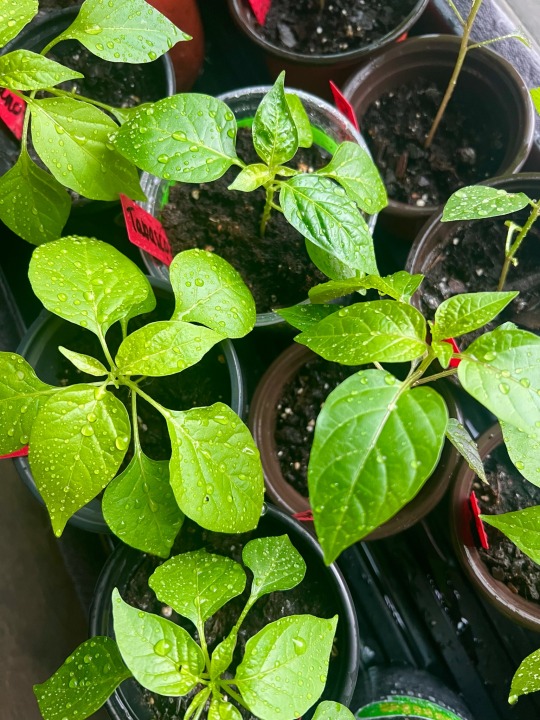
5/4/24 ~ letting the bebes get some fresh rain 🌧️ 🌱
#indoor garden#sustainable gardening#container gardening#vegetable gardening#starting seeds#growing food#plant life#plant mom#veganuary#homesteading#grow food not lawns#edible gardening#grow food#gardening tips#gardening 101#organic gardening
23 notes
·
View notes
Text

📚🌾 Discover the ultimate guide to self-sufficient living with "The Encyclopedia of Country Living, 50th Anniversary Edition"! 📚🌾 This comprehensive manual, written by Carla Emery, has been helping people live off the land for over 50 years. With over 1 million copies sold, it's the essential resource for homesteaders, urban farmers, and anyone seeking a simpler, healthier lifestyle. 🌳 Learn how to: Can, dry, and preserve food 🍅 Plan and grow your own garden 🌽 Make 20-minute cheese 🧀 Bake homemade bread 🍞 Raise chickens, goats, and pigs 🐓🐐🐷 Treat your family with natural remedies 💊 And so much more! 🌿 Whether you live in the city or the country, this book is a must-have for anyone interested in self-sufficiency, sustainability, and living in harmony with nature. 🌳🌍 Don't miss out on this ultimate guide to living off the land. Grab your copy and start your self-sufficient adventure today! 🏡💚
👉 Click the link For more info! https://amzn.to/3YoFttW 🌟
The Encyclopedia of Country Living, 50th Anniversary Edition: The Original Manual for Living off the Land & Doing It Yourself
Share this post with friends who dream of country living, and drop a comment below if you already have this must-have manual! ��✨
#gardening uk#lovegardening#gardenchat#organic gardening#gardening tips#garden#gardening#gyo#vegetable gardening#backyard#CountryLiving#DIY#Homesteading#Gardening#SelfSufficiency#50thAnniversary#CountryLife#OrganicLiving#FarmLife#SustainableLiving#OffGrid#HomesteadLife#GrowYourOwnFood#BackToBasics#SimpleLiving#Permaculture#RuralLiving#NaturalLiving#EcoFriendly#GreenLiving
8 notes
·
View notes
Text
Creating a Cozy and Chaotic Haven: Welcome to The ADHD Homemaker
Home is where the heart is, and as homemakers, we have the incredible privilege of shaping and nurturing that heart. Welcome to The ADHD Homemaker, your online guide to the art of homemaking. Whether you're a seasoned homemaker or just beginning your journey, you've found a welcoming space where we celebrate the magic of home.
The ADHD Homemaker isn't just a blog; it's a community of people who are passionate about learning more about homemaking and finding peace within the chaos of this crazy world. Here, we explore the many facets of homemaking, from organization and decor to cooking, cleaning, and everything in between.
I believe in the transformative power of homemaking. It's not just about keeping a tidy house; it's about cultivating a nurturing environment that reflects your personality and values. Homemaking is an art, a labor of love, and we're here to help you embrace it with enthusiasm.
This blog is your resource for all things homemaking, offering a wealth of ideas, advice, and inspiration. In the upcoming posts, we'll dive deep into various aspects of homemaking, including:
Home Decor: Discover tips and tricks for decorating your living spaces to reflect your style and create an inviting ambiance.
Cooking and Recipes: Explore delicious recipes, cooking techniques, and meal planning ideas for all skill levels.
Organization and Cleaning: Learn how to keep your home tidy and efficient, making daily life smoother and more enjoyable.
DIY Projects: Get creative with DIY projects and crafts to add a personal touch to your home.
Homemaking is a labor of love, and it's even more rewarding when shared with a like-minded community. We encourage you to share your insights, ask questions, and engage with us and fellow homemakers. Together, we can make the journey of homemaking more enjoyable and fulfilling.
I am thrilled to have you join me on this homemaking adventure. Together, we'll find joy in everyday life, create spaces that envelop us with comfort, and turn our houses into homes filled with love. Stay tuned for our upcoming posts, and let's embark on this journey of homemaking and heartwarming together.
Thank you for becoming a part of our homemaking family!
#homemaker#homemaking#housewife#homemade#homedecor#homedesign#home#handmade#homesweethome#homesteading#urban homesteading#homemakers#personal care#slow living#workfromhome#feminine aesthetic#feminine#femininity tips#femininity journey#femininity moodboard
46 notes
·
View notes
Text
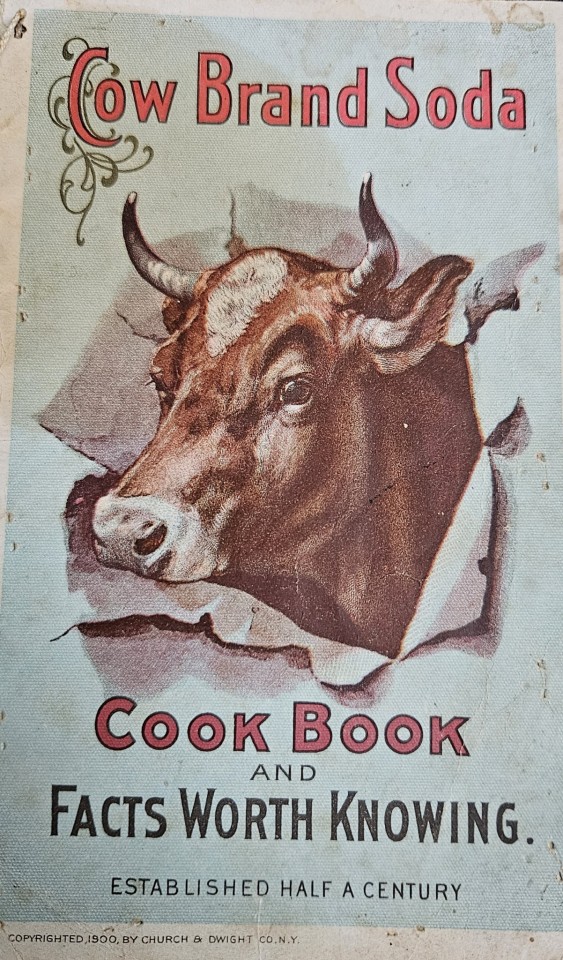

Old Homestead Meal Bread
-Cow Brand Soda Cook Book and Facts Worth Knowing 1900

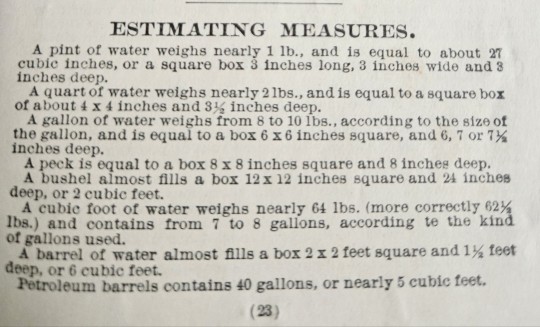

21 notes
·
View notes
Text
Quick post for today :)
So I love been wanting to grow sweet potatoes as the vines, leaves and tuber are all edible so they make sense to try and grow them.
While I've not tried the vines/leaves before I figure at the worst, the hens will like them :) and we will eat the tubers!
To get it started I got a sweet potato (grocery bought can work. Just be cautious because they may have been sprayed with growth retardant or may carry disease. If possible get from a small/local plant seller in you area as they will also should be acclimatized.)

I planted the tuber in a shallow tray, covered with dirt and just let it be watered on the seed table till the shoot got about 5ish inches?
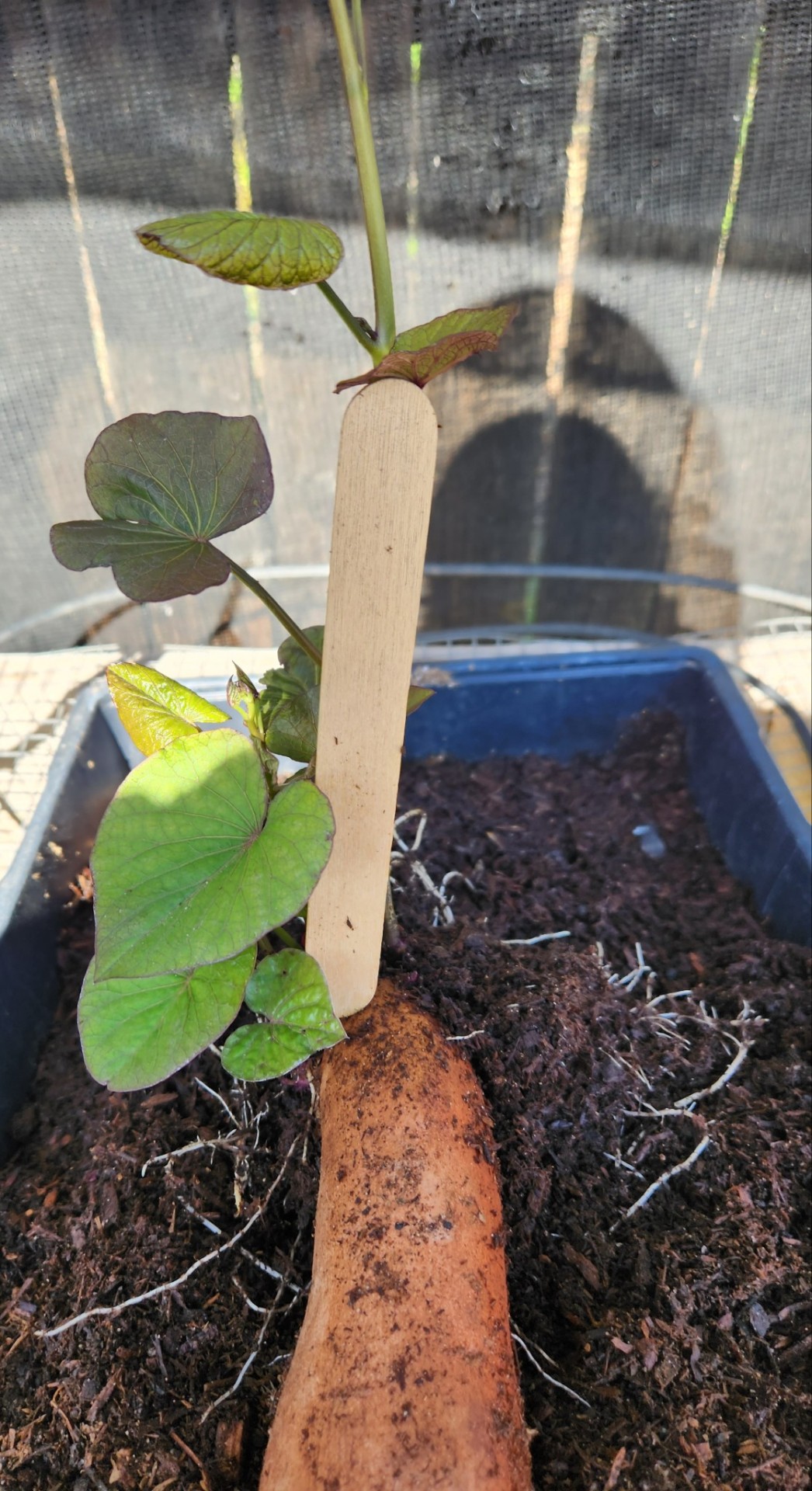
Popsicle stick to show size. Look at all them lil roots :)

Pulled it out to examine it, ive never done this before so this has been very exciting to see! The roots clumped up pretty much only where the vine grew and was easy to seperate.

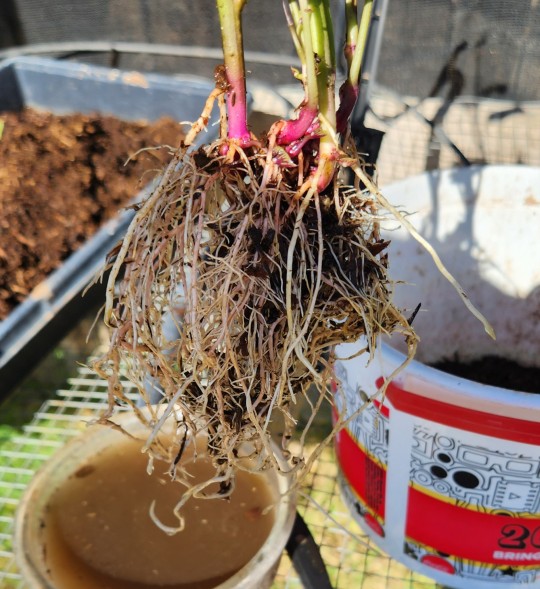
Washing the dirt off so I can pull them apart or figure best break zone

I got 4 vines so far, minimal breakage just had to tease them apart.

Planted

Covered them back up for now, our ducks wander this side and they absolutly would not say no to tender greens 🤣🦆
I put the original tuber back in the rooting tray...
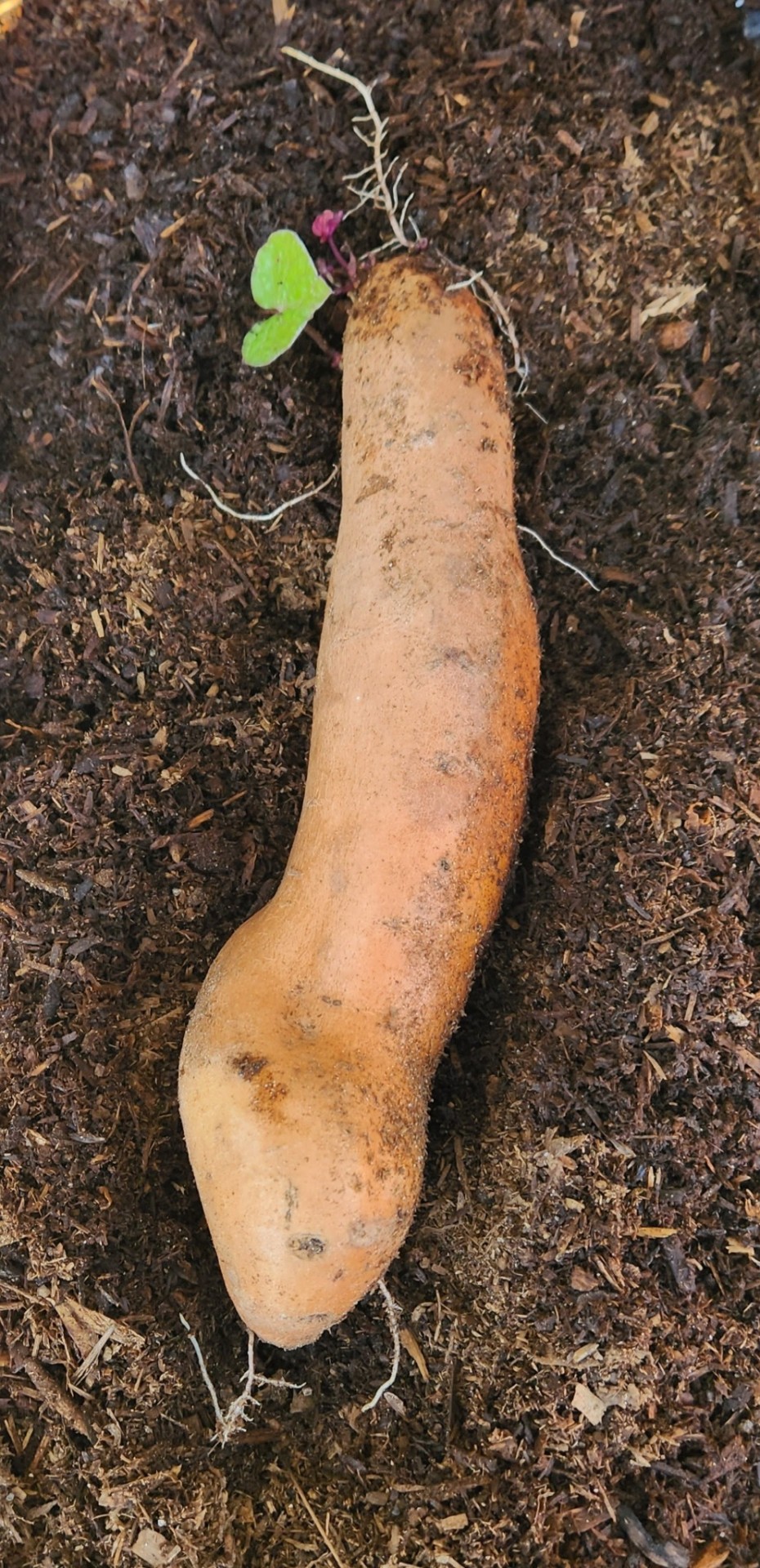

And buried it~ back to rooting sweet potato :)
🌱🌻🦆Happy Gardening!🦆🌻🌱
4 17 2023
#homesteading#self sufficient living#thestudentfarmer#studentfarmer#self sufficiency#food#garden#gardening#low waste#duck keeping tips#ducks#sweet potato#sweet potatoes#fully edibl
65 notes
·
View notes
Text
6 notes
·
View notes
Text

Homesteaders Handbook is a comprehensive guide that provides information, tips, and practical advice on various aspects of homesteading. It is designed to help individuals or families who are interested in starting or improving their homestead to lead a more self-sufficient and sustainable lifestyle.
I think every person should have this book in their home, next to their emergency foods or in their bug out bags. This knowledge is better at your fingertips now, as you might not be able to get it during crisis or blackouts. ask my anything.
#homesteading#survival tips#off grid#natural disasters#doomsday#preppers#meal prepping#grow food#chicken#farming#farmhouse#eggs#self reliance
6 notes
·
View notes
Text
Homemade Beef-Jerky
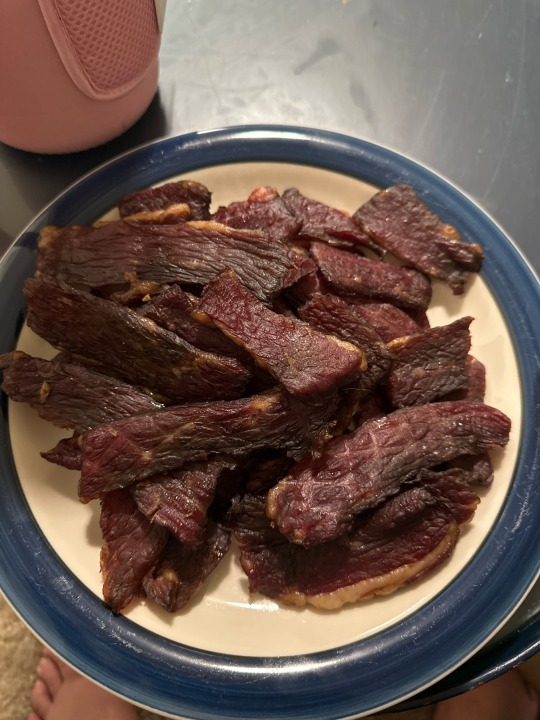
Good morning my little pierogis
This is my favorite home-made jerky recipe
Use as much or as little beef as you want to make - I personally bought a beef brisket that was on sale for about $40 that yielded roughly 10 pounds of jerky.
Now - I am not perfect. My very first batch I made a couple mistakes, and I’ve made this recipe before. I should have trimmed more of the fat off, and I should have sliced it thinner.
Don’t get me wrong, I still ate the fuck out of them, but I just couldn’t preserve them or hang onto it longer term. Learned my lesson though 😊 keep in mind even people with experience can get it wrong too.
Recipe
1 cup of soy sauce
2 tablespoons minced ginger
2 garlic cloves
Salt - hella (I measure with love)
Juice from half a lime
Cracked black pepper - measure with love (1 tbsp is fine)
1 pound of sliced brisket
So here’s the beauty of beef jerky; It’s completely customizable. You can add things into your marinade, take them out, change the amounts, the world is your oyster.
After you trim down your preferred slice of meat (I’ve found that tougher cuts like brisket or chuck do well as jerky because they’re full of collagen and keep their shape well), pop it back into the freezer for about 30 minutes or so. The reason for this is that when you’re slicing it, you’ll be able to achieve a thinner more consistent cut because it will be on the solid side - something I forgot to do when I made this first batch. Oops.
Hang onto those fat trimmings by the way, mamas gonna show you all how to make some lovely tallow with that
You’ll put your sliced beef into a bag or bowl (ziploc or otherwise, as long as it’s water tight) and add your misc. seasonings (see above). Leave the salt out - the soy sauce has got that taken care of initially. Leave that to marinade for at-least 2 hours. Personally, I leave it over night so the acidity of the lime/soy sauce and the saltiness in the soy sauce can break down some of that elasticity that tougher cuts of meat generally have. Like I said though - the worlds your oyster. Yolo.
Once the meat is done marinading go ahead and pull it out, and dry any excess marinade off the slices of beef using a towel or wipe.
Once the beef slices are dry, sprinkle salt on either side of the slice. This isn’t necessarily required, but I’ve found it pulls more of the water/moisture out and can speed up the dehydrating process.
If you’re using a dehydrator go ahead and set your racks up, try to space them out as much as you can do ample air flow can circulate - if you’re using an oven, preferably you should have a rack sitting on a sheet pan so drippings if any can flow away from the meat.
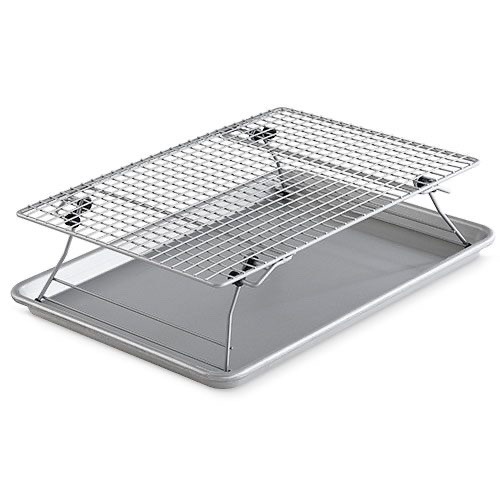
As is with any meat product, it needs to be cooked to an adequate internal temperature to kill any bacteria or disease. You’ll want to start with your oven or dehydrator set to 165 degrees. Once the meat has reached 165° Fahrenheit, promptly turn the oven/dehydrator down to 140°.
After the heat has been turned out now you get to wait, and suffer while you smell delicious food you can’t eat yet. Sorry. The drying time can take anywhere from 8-12 hours, depending on the meats thickness, oven/dehydrator type, etc. honestly you’ll have to play it by ear a bit. Once it’s done though, you can keep it on your shelf for up to 3 months with silica packets or something similar to keep out moisture in an airtight container. I personally put it in jars and pressure cook them to sterilize and seal the jars, but that’s another convo for a different day.
If you keep it in the fridge - 1 to 2 weeks
If you keep it in your pantry - maybe 1 week
Freezing - 3 months + however long the storage method after thawing is.
Keep in mind it’s still meat - she can go bad
Happy hunting, and remember to do a sniff test if you forget it for awhile lol.
#beef jerky#homestead#homesteadtips#homesteading#healthy food#food preservation#food prep#doomsday preppers#farmers#farming#cooking#cooking tips#brisket#recipe
27 notes
·
View notes
Text
The Homesteaders Handbook by Tim And Amber Bradshaw
DONATE: http://www.cash.app/$internetbizlife {Affiliate Disclaimer}: This blog post may contain affiliate links. This means that if you click on a link and sign up to a platform, or make a purchase, I may receive an incentive, or commission, at no additional cost to you. However, I only recommend products or services that I believe in and that I think would be valuable to my…
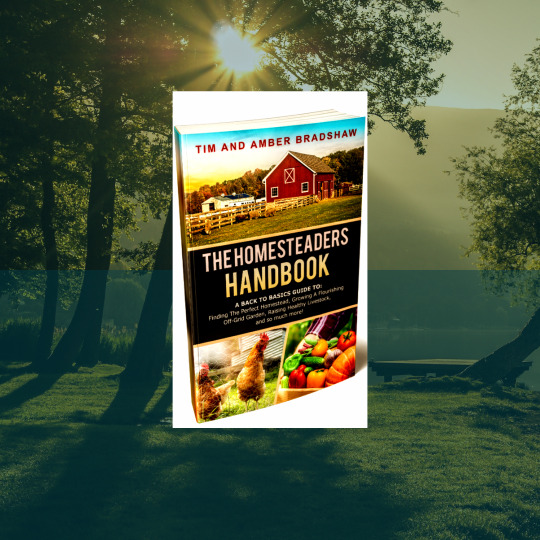
View On WordPress
#ass seen on tv#budgeting tips#building off the grid#diy#gardening#handbook#healthy eatingy#homestead#homesteaders handbook#homesteading#homesteading 101#homesteading documentary#homesteading family#homesteading for beginners#homesteading off the grid#Internet Biz Life#internet biz life online#off grid living#organic gardening#self sufficiency#sustainable living#The Homesteaders Handbook by Tim And Amber Bradshaw#the smoky mountain homestead
2 notes
·
View notes
Text
LEAFY VEGGIE STORAGE

Some Brassicas do well stored in root cellars when hung by their roots . 
Leaf based brassicas like Kale , collards and mustards when hung with the leaf material wrapped in plastic with perforations for breathing.
Flowering types like Broccoli and Cauliflower also do well if the heads are kept wrapped in plastic like above
Brussels sprouts are kept right on the stem and picked off when needed .
Some other plants do exceptionally well when stored this way too like bush type beans, hot peppers , and smaller type eggplants .
The moisture remaining in the root ball and stem not only help keep the fruit of the plant from drying out but also helps to ripen fruit when picked early because of an incoming hard freeze or frost.
The last of your hot pepper crop every year can be harvested on the entire plant and allowed to ripen this way . When dried peppers are desired it’s turns out to be a fantastic way to dry them on the bush by cutting off the root and leaving the cut stem exposed.
#vegetables#root cellar#food storage#greens#cabbage#lettuce#veggies#cauliflower#brussels sprouts#peppers#gardening#garden#junko#junko on the farm#tips#homesteading#hack#hacks#life hacks
26 notes
·
View notes